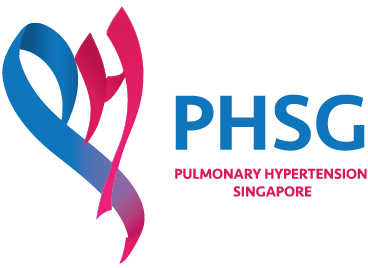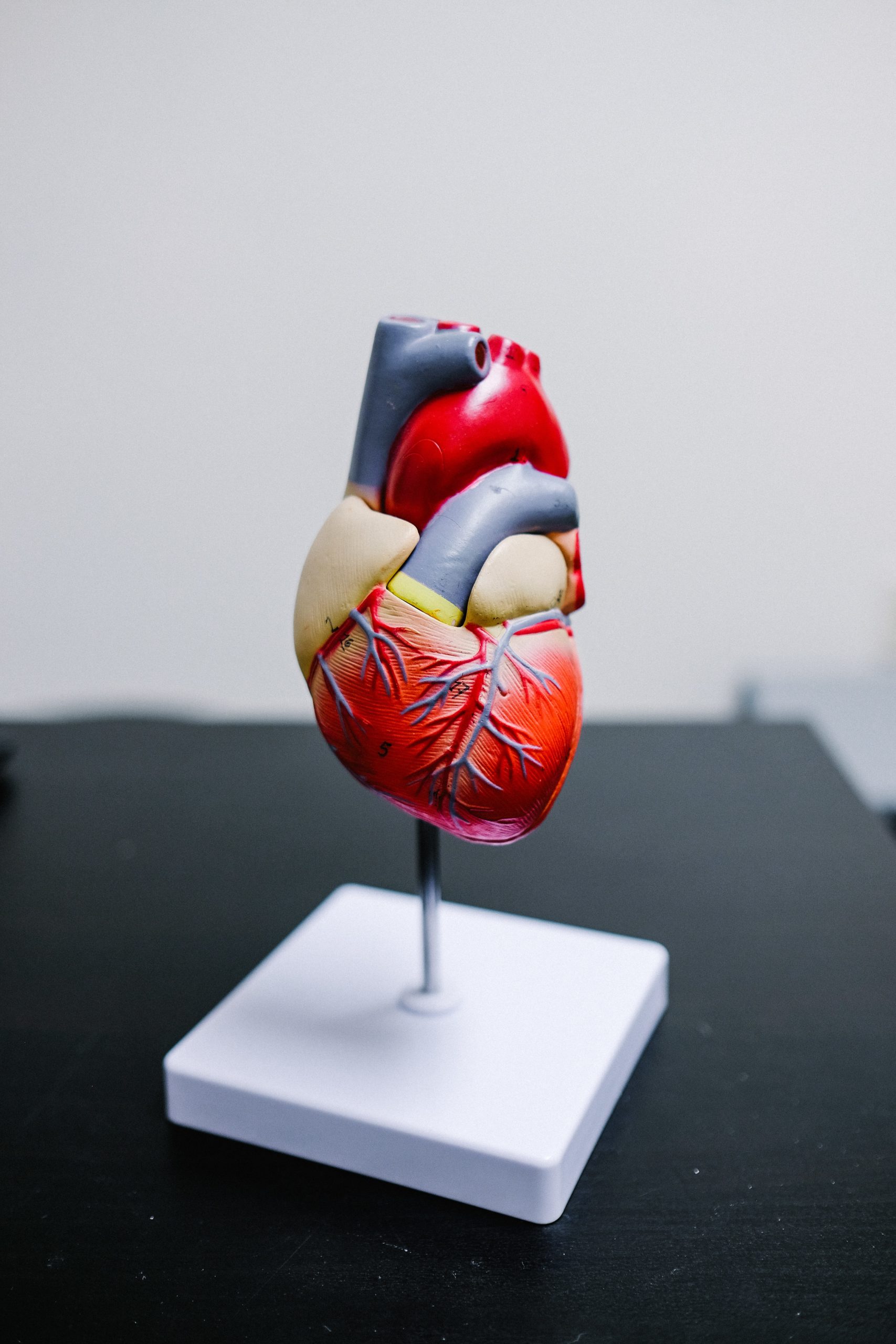How is PH managed?
For those diagnosed with PAH (Group 1), your doctor may use this simplified table to track your progress1:

This helps them to plan which tests need to be repeated at different times:

As mentioned, PH is complex and requires different approaches to manage the condition well. Each type of PH also has its own management strategies. The following are some general measures your doctor may recommend1:
Supervised Rehabilitation
Since physical activity requires so much effort, it is common for most people with PH to avoid activity altogether. However, this leads to a vicious cycle of inactivity and breathlessness.
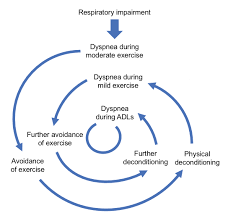
Those with PH should be encouraged to be as physically active as possible, since exercise can help to maintain physical function and slow down loss of muscle. It is recommended to start off with a special programme called cardiac or pulmonary rehabilitation, where you will learn how to exercise and manage your symptoms. In Singapore, you will need a doctor’s referral to join these programmes. Every local major restructured hospital will have either or both of these programmes. An exercise specialist, usually a physiotherapist, will be able to use your CPET or 6MWT results to prescribe the best intensity of exercise for you.
You may already be exercising on your own. Remember to keep the intensity at a moderate level and within your symptom limits. You may wish to use this guide:
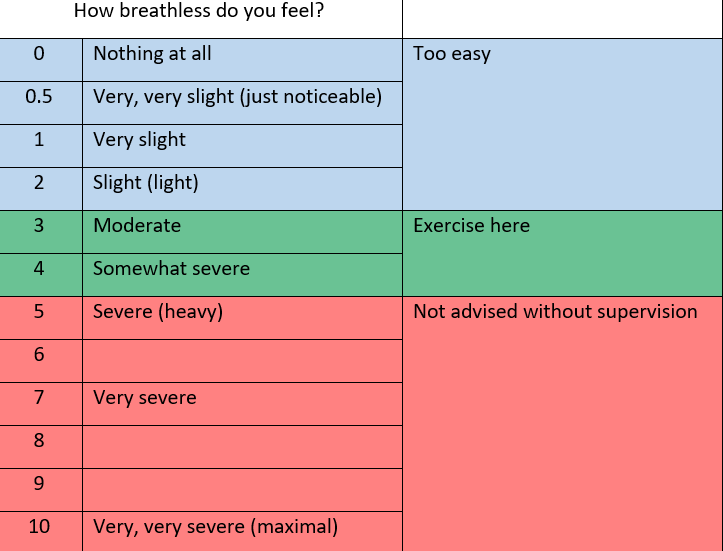
Anticoagulation
Some types of PH, such as CTEPH (Group 4), may need to be on lifelong blood-thinners. This prevents the formation of deadly blood clots in the blood vessels. Care must be taken, as this increases risk of bleeding. Vitamin K antagonists (Warfarin) are the most commonly used anticoagulant.
Diuretics
Heart failure leads to fluid retention in the circulatory system. If you are in fluid-overload, your doctor may prescribe diuretics which helps to remove excess fluid from your body. Examples of these are frusemide and spironolactone.
Oxygen
Your doctor may prescribe supplemental oxygen if the level of oxygen in your blood is consistently low (partial pressure of arterial oxygen <60 mmHg or arterial oxygen saturation <92%).
Cardiovascular drugs
Some other medications used to treat heart disease may be prescribed to you, such as digoxin, which is used to treat fast and irregular heartbeats.
Vaccinations
Those with PH are prone to developing chest infections, which can cause death. It is recommended that you receive vaccinations against at least influenza, Streptococcus pneumoniae, and SARS-CoV-2.
Surgical intervention
Some types of PH may require surgery to fix underlying defects (such as hole in the heart, heart valve disease) that are causing PH. In those diagnosed with CTEPH, pulmonary endarterectomy (PEA) may be considered as a first line of treatment. If surgery cannot be done or the obstruction reoccurs, then balloon pulmonary angioplasty may be considered. In very severe but selective cases, lung transplantation may also be an option.
Psychosocial support
Anxiety and depression are serious and common side effects of many chronic diseases. Both patients and caregivers are vulnerable to it, which can lead to poor quality of life. Joining support groups, such as PH Singapore, are important for providing the emotional, psychological and social support that patients and caregivers need. Click here to find out how you can join our support group.
PAH-specific drugs
The following are specialised drugs that are approved for the treatment of PAH (Group 1). Some are also used in selected CTEPH (Group 4) patients. Most of these drugs are not recommended for use in PH Group 2, 3 or 5.
Calcium Channel Blockers (CCB)
These lower blood pressure by preventing entry of calcium into the walls of the heart and blood vessels, causing widening of the blood vessels. It is only recommended for those who respond to vasoreactivity testing. Commonly used CCBs are nifedipine, diltiazem, and amlodipine.
Endothelin receptor antagonists (ERAs)
These lower blood pressure in the pulmonary arteries by blocking endothelin, which is a substance that regulates blood pressure by narrowing blood vessels. Blocking the effects of endothelin causes arteries to relax and widen, allowing the pressure to drop. ERAs available in Singapore are:
- ambrisentan (Volibris)
- bosentan (Tracleer®, Proart)
- macitentan (Opsumit®)
Phosphodiesterase 5 (PDE-5) inhibitors and guanylate cyclase stimulators (sGC)
These lower blood pressure by increasing nitric oxide in the body. This relaxes the blood vessels, allowing it to widen and thus reduce blood pressure. Drugs in this class available in Singapore are:
- sildenafil (Revatio®, generic)
- tadalafil (Cialis®, generic)
- riociguat (Adempas®)
Prostacyclin analogues and prostacyclin receptor agonists
Prostacyclin is a naturally-occurring hormone that acts to relax and widen blood vessels. Drugs in this class work to increase the amount of prostacyclin in the blood. The drugs available in Singapore are:
- epoprostenol (Veletri®, Flolan)
- iloprost (Ventavis®)
- selexipag (Uptravi®)
Other concerns about living with PH
Air Travel
Short-term air travel (less than 1 day) has been shown to be well tolerated in those with stable PAH. You should discuss with your doctor whether you are able to fly. If oxygen is needed for your flight, you may only use a portable oxygen concentrator (POC). Each airline has their rules and regulations, so be sure to check in advance. For example, Singapore Airlines only allows FAA-approved POCs on their aircraft. Find out more about flying with oxygen here.
Pregnancy and Birth Control
Over the years, death associated with pregnancy in PAH has reduced significantly due to improved PAH treatments. Risk of mother’s death is now approximately 11-25%, down from up to 56%1. Current international guidelines no longer actively recommend that women with PAH avoid pregnancy.
However, being pregnant is associated with risks, and can worsen PH. If you have PH and are or are planning to get pregnant, be mindful that you may be considered a high-risk pregnancy. You will need to discuss your condition and plan thoroughly with both the PH and obstetrics doctors to make an informed decision.
To avoid unplanned pregnancies, it is important to consider birth control. Read more for details:
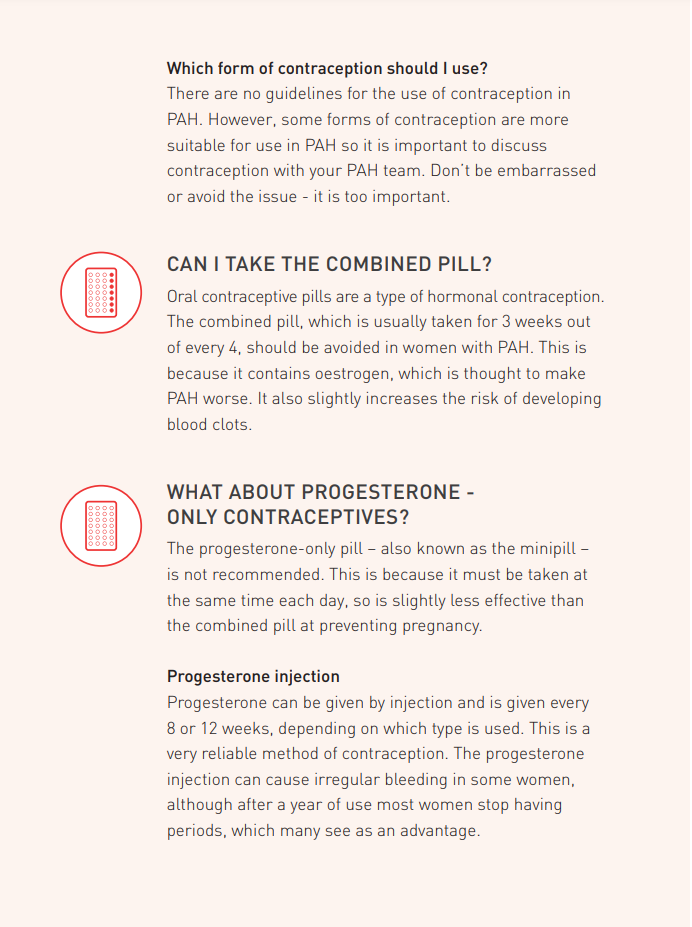
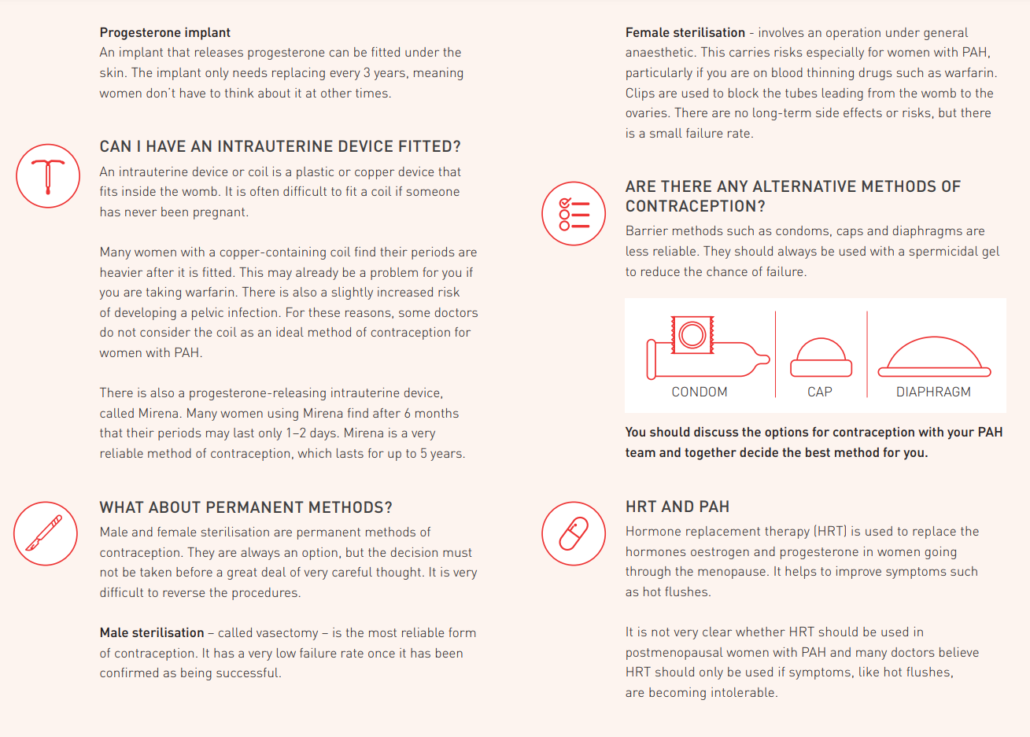
End-of-life Care
Because PH causes gradual decline with episodes of problems in between, it is difficult to predict whether death is approaching. Those living with PH should have open and sensitive communication with their caregivers and healthcare providers to discuss their fears, concerns and wishes about how and where they would like to spend their end of life. For more information, learn about Advance Care Planning here.
Reference:
1. Humbert M, Kovacs G, Hoeper MM, Badagliacca R, Berger RMF, Brida M, Carlsen J, Coats AJS, Escribano-Subias P, Ferrari P, Ferreira DS, Ghofrani HA, Giannakoulas G, Kiely DG, Mayer E, Meszaros G, Nagavci B, Olsson KM, Pepke-Zaba J, Quint JK, Rådegran G, Simonneau G, Sitbon O, Tonia T, Toshner M, Vachiery JL, Vonk Noordegraaf A, Delcroix M, Rosenkranz S; ESC/ERS Scientific Document Group. 2022 ESC/ERS Guidelines for the diagnosis and treatment of pulmonary hypertension. Eur Respir J. 2022 Aug 30:2200879. doi: 10.1183/13993003.00879-2022. Epub ahead of print. PMID: 36028254.
Feeling lost? Use the following to help you navigate medical terms:
All information here is intended to serve as a guide only, and does not replace consultation from a certified medical physician. Always speak to your doctor about the treatments and plans relating to your medical condition and the intended outcomes. All information is adapted from the Pulmonary Hypertension Association and the 2022 ESC/ERS Guidelines for the diagnosis and treatment of pulmonary hypertension unless otherwise stated.
